
Black Myth: Wukong Review
How do you describe a game that appears to showcase truly incredible ideas in terms of art direction, game design, and environmental design, but also falters on so many things elsewhere, that the whole experience feels hollow? For every moment that Black Myth: Wukong made my jaw drop, there’s an equal number of moments that left me frustrated to the point where I wasn’t sure if I’d even finish the game.
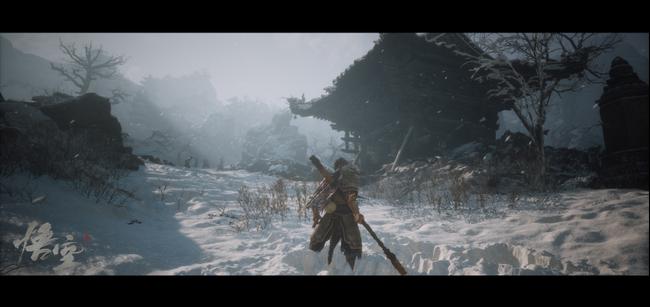
Fresh Brew in an Old Cask
Let’s start from the top: Black Myth: Wukong is a soulslike action RPG. I know people are tired of the term soulslike, but there’s not much else I can use to describe a game where you roam maps looking for treasure, defeat enemies that (mostly) respawn when you die or rest at a bonfire, and fight larger than life bosses that often have multiple phases.
You assume the role of the “Destined One” (after the tutorial, at least), a mute monkey resembling Son Wukong. That is, you have an extendable staff, the ability to create clones of yourself (briefly via perfect dodging and later actual clones that fight with you), the ability to shapeshift at specific parts of the game, and so on. The story…well, it’s more than a little confusing if you haven’t read or engaged with Journey to the West, the famous Chinese tale. While you may have interacted with pieces of the novel (Wukong is a famous pop culture figure, inspiring characters like Dragon Ball's Goku and others across multiple media properties), if you haven’t read the actual story, you will probably find yourself lost. But it’s a good kind of lost — the way the story unfolds is fascinating.
Black Myth is steeped in Chinese mythology, from item descriptions to the environment itself, and it is beautiful. As frustrated as I got with the game, which I’ll touch on in a bit, the environment and art direction is fantastic. Nearly every time I crested a hill or rounded a corner, I had to stop and take in the absolutely breathtaking scenery — from Chapter 2’s desert ruins to Chapter 5’s volcanic mountains and everything in between, I never wanted for more engaging environments. If you enjoy Chinese or Buddhist mythology or themes, this game is like a buffet for the senses.
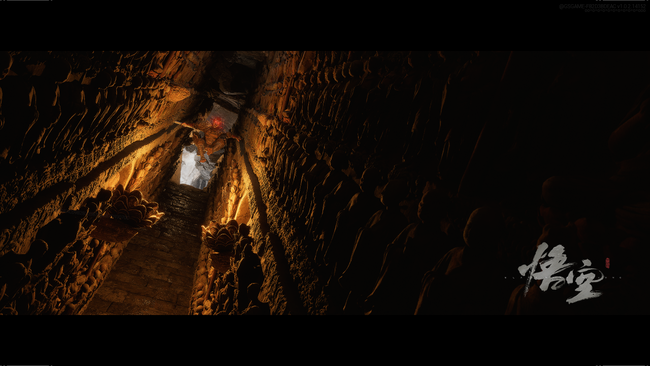
But, beautiful vistas do not substitute for basic level design. Picture this scenario: Ahead of you is a knee-high wall blocking what appears to be a path leading through some crags. You would imagine that, since you have a jump button, you can clamber over the wall and explore down that path, right? Well, no. Only some paths are explorable, the rest are blocked off by invisible walls. Or, perhaps you’re exploring a wide-open area and see a clearing beyond the trees. Well, too bad, that’s terrain you can't explore. The lack of proper signaling in Black Myth: Wukong's environments can lead to disappointment. Running across an area that feels too large to explore what you think is a path forward, only to run into an invisible wall, is frustrating.
These level design issues would be easy to ignore if they weren't in every single chapter, affecting Black Myth's forests, deserts, snow-fields, caves, and crags. It was so pervasive that I just gave up on exploring somewhere around Chapter 3. The game shifts from narrow hallways or pathways to wide-open fields at whiplash speeds that often I wasn’t sure if the path I was on was the golden path or not. This isn’t necessarily a big problem, since it turns out there can be multiple golden paths to the final boss of a zone, but it is disorienting to take a side path and have it wrap around back to where you were originally. These aren’t shortcuts, by the way, these are completely different routes.
Something that would have helped this would have been a map. I’m not sure if there was a map key item I missed somewhere, but I did not have access to any map nor any indication that there should be a map. I’ll explain more later about Chapter 6, which is where my frustrations boiled over, but keep in mind the lack of a navigational tool — a map, a compass, waypoints, anything — coupled with the aforementioned invisible walls made exploration throughout Black Myth a slog.
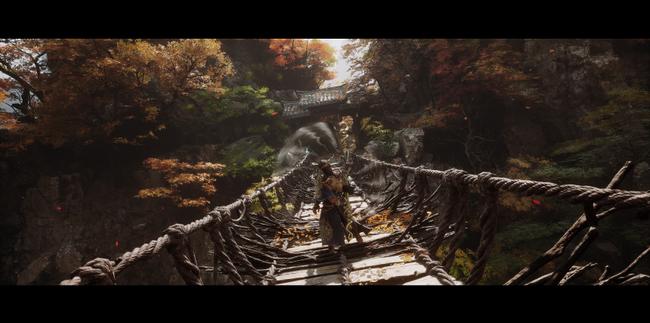
A Good Match Calls For A Good Weapon
The combat and skill trees in Black Myth: Wukong are genuinely varied and deep enough to facilitate different combat styles, as long as that combat style is melee. You can focus on your staff with three different “stances”, multiple magic spells, the ability to shapeshift into a creature and fight using a completely different combat style, or you can shore up your fundamentals with passive stat increases. The magic in Black Myth is supplementary at best — you can freeze opponents in place, disappear into mist & reappear with a kick, summon a ring of flame to buff yourself, summon doppelgangers to fight with you, and so on.
If you don’t want to bother with all that spellcasting nonsense, you can unlock a skill that locks you out of magic and drains your mana, but in exchange boosts your combat stats significantly. I used this Spell Binder mode for the majority of the game after unlocking it, and while it did force me to improve at dodging (being magic-locked, you cannot parry or immobilize to get out of jams), it also revealed that the combat is not well-designed around not having access to magic. Yes, your parry is a spell and you don’t unlock it until Chapter 2.
The only way to stagger certain bosses is to hit them with a combo finisher, a charged heavy strike, or a varied heavy attack. Unfortunately, since your light combo is several seconds long, this means that for every single boss, you will be unable to land your entire light combo without dodging in-between. That is, assuming you grabbed the skill node that allows you to retain your combo after a dodge. Alternatively, you can charge up your heavy attack manually, but if you get hit, sprint, or dodge, you lose the charge. Some talents allow you to keep the charge while sprinting or after a Perfect Dodge, but otherwise, you have to time it right — and since some of the late-game bosses don’t really give you much breathing room, this effectively makes those talents mandatory.
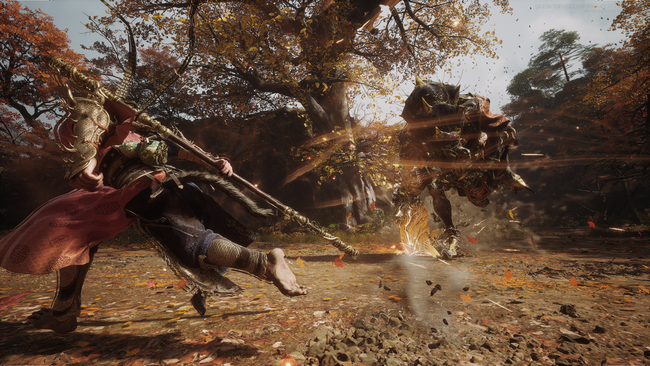
You can eventually get good enough at Spell Binder mode and martial combat that you can overcome pretty much everything — I’ve done it, and I think I’m pretty average at games. The problems that I have with combat have to do with hit detection and feedback. Sometimes enemies have wonky hitboxes, where they’ll hit you with plenty of empty space in between, and sometimes your attack that appears to connect actually just whiffs. Sometimes enemy attacks lack feedback to show you that you are taking damage, where your character won't react or be knocked away, but will lose a chunk of life.
Both of these are frustrating to deal with in an action RPG. As an example: a boss in Chapter 6 summons tornadoes of cold that do not have defined AoE markers. Sometimes it’ll spawn close enough to you that you’ll take damage, but your character won’t flinch or be knocked around — he’ll get a little icy while your Frost meter builds up. The damage is not negligible, it can three-shot you if you’re not careful. So, the idea that unless I’m looking at my health bar, I sometimes won’t get an indicator that I’m in danger is frustrating.
Sometimes you get clipped by an enemy for 35% of your life, but Destined One will barely flinch. Sometimes you’ll dodge an attack, but still take damage, and Destined One will complete the dodge animation and be ready for your next input. Sometimes you’ll fail to dodge an attack and get launched somewhere, but take no damage at all (admittedly, this is beneficial, but still confusing.) As the game progresses you get multiple bosses that have the attack cadence of Radahn, Promised Consort — that is, you get a series of quick attacks interspersed with extremely delayed heavy attacks. These problems with feedback were apparent as early as Chapter 1, but can be overcome with experience. The game isn’t that difficult on the whole, but the inconsistency is frustrating.
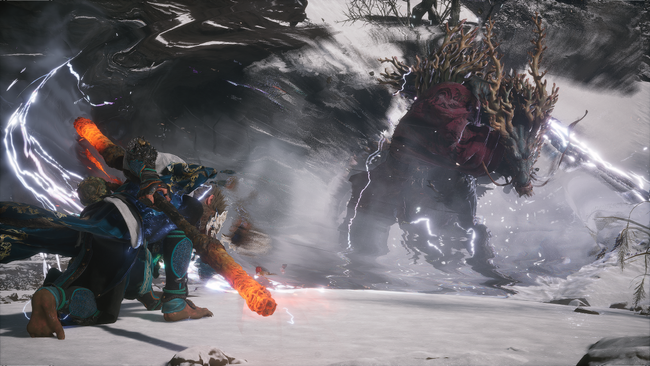
Harsh, Rash, Ever Unquelled. Rank, Dank, Muck-impelled
Okay, so combat is a mixed bag…what about the RPG elements? Well, you can adjust your stats in a handful of ways. Leveling up and allocating stat points towards whatever you want is the easiest method, and there are a number of choices that affect how you engage with enemies. The ability to modify your passive stats for a flat benefit at the cost of a shiny new skill modifier is nice to have and felt like I was actually making a choice. You can also spend purple tokens (Mind Cores) at the Pill Fox in Chapter 2 for even more passive stat modifiers. Everything from health to mana to your resistance to poison can be boosted — and the best part is, you can change these choices at any time. The Pill Fox will help you regurgitate and remake those passive pills, while the Shrines allow you to respec your talent trees for free. This ease promotes trying different builds to solve different problems, which is fantastic game design!
So, it boggles the mind why we would be given all this customization, but then have permanent choices or non-choices for the rest of the game. At the end of each chapter, you will acquire a relic, and when you examine the relic you are allowed to pick a single passive benefit out of three. Problem is, this choice is (as far as I can tell) final. You might choose your first two relics to augment one build, but then somewhere around chapter 3, you might decide you really like a different build. Too bad, your relics can’t be changed - hopefully you have the foresight to know ahead of time precisely what build you want to have hours later.
The gear upgrade system is frustrating too — if you get a weapon or armor set that complements your playstyle, don’t get attached to it because you will replace it with a later one simply because it has better basic stats. As far as I can tell, you cannot upgrade older gear up to match your current gear, either.
I say “as far as I can tell” a lot because, to be frank, the game is lacking in tutorials or tooltips. A few examples: when you unlock your second spell for the first slot, there’s no tutorial to teach you how to swap (you can only do so at shrines). When you unlock your first relic, there’s no indication that there’s a passive bonus to unlock until you visit the Relics screen on your inventory HUD. There’s a slot in your equipment that, as far as I can tell, isn’t filled with anything until after Chapter 5 — it just sits there, empty. When you enter Chapter 6 and complete the first boss, you gain the ability to fly — but the game doesn’t tell you what your next goal is, you’re just supposed to fly around and find bosses to beat. (More on this later.)
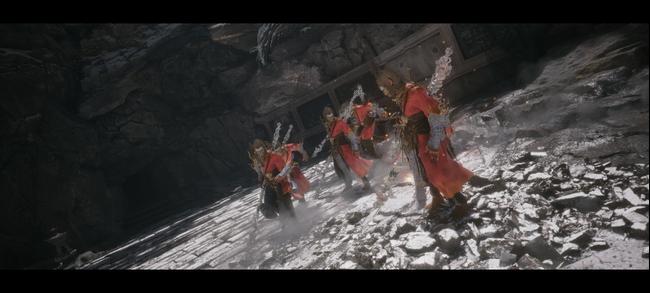
There were also significant bugs. I ran the game mostly fine on my midrange PC (with shadows on low, medium graphical settings, and so on) and still noticed a few areas that had massive frame drops and poor optimization — Chapter 4 is an offender on the level of Dark Souls' worst-performing zones (Blighttown is back, baby!) A number of cutscenes also played the incorrect voiceover language. I played with English voices selected and would say that a good 40% of the cutscenes had Chinese voices. I didn’t really mind since the Chinese voice acting sounded extremely good, but it was still jarring to suddenly hear Zhu Baijie swap from English to Chinese on the fly.
Some cutscenes lacked voices entirely, while others lacked subtitles. One in particular lacked all subtitles and sound except for ambient noises, which made trying to follow along literally impossible. It was the end-of-chapter cutscene for Chapter 3 too, so it was pretty significant. Many journal entries that detail information about the various yao guai you face in the game were untranslated from Chinese, which made reading about the lore impossible. Which is frustrating, because the lore that you can read about is extremely interesting.
Some combat quirks I noticed were also more than a little frustrating. In action games, typically when your attack or skill animation has finished, you can use a consumable, right? For some reason, throughout the entire game, there were multiple instances where I could not use my consumables. You can use them while moving, the game just didn’t seem to register my “use” input for several seconds after a previous action was completed. Naturally, since consumables are very important for survival, this made combat more frustrating than it needed to be.

Two Minds' Long Fray Leaves But One To Stay
Finally, Chapter 6. As stated before, you attain the power of flight for this chapter, and they give you a massive valley to soar around in. Without waypoints, or a map, or any soft cue whatsoever about what to do, you are literally just flying around and looking for something that might be interesting. There are some visual signs that you should check a location out — a differently colored tree marks a shrine you can visit, a ripple in the water marks an optional, obnoxious boss fight, lightning strikes indicate the golden path — but you will find yourself soaring over a lot of ground that has nothing in it but trees, rocks, and small critters. This is a marked departure from the rest of the game, and it is frustrating to fly around finding nothing for several minutes. That’s to say nothing of the boss fights themselves, which rank up there as some of the worst-designed fights I’ve ever encountered. Honestly, if Chapter 6 was removed and they simply gave us the splendor of the final boss rush, which kicked a lot of ass, the game would be better for it.
So let’s put a bow on this review. Do I feel that the game is unfinished? In large pieces, yes, but at least with the story, no. I felt satisfied with how the tale wrapped up…but I can’t shake the multiple, lingering frustrations I had throughout the journey to the end. I normally try to keep my reviews succinct — to get to the point of what you, the reader, might care about the most. But for Black Myth: Wukong, I really wanted to lay out all of the reasons why I both love and loathe this game.
A game with peaks and valleys like this is, as I've stated throughout the review, frustrating. I can see a 10/10 in this game somewhere, but multiple questionable-level design and game design choices combined with a hefty amount of performance issues and bugs unfortunately drag it down. Black Myth: Wukong is a beautiful, somber, fascinating tale to experience — you just have to muddle your way through a forest of problems to enjoy it.